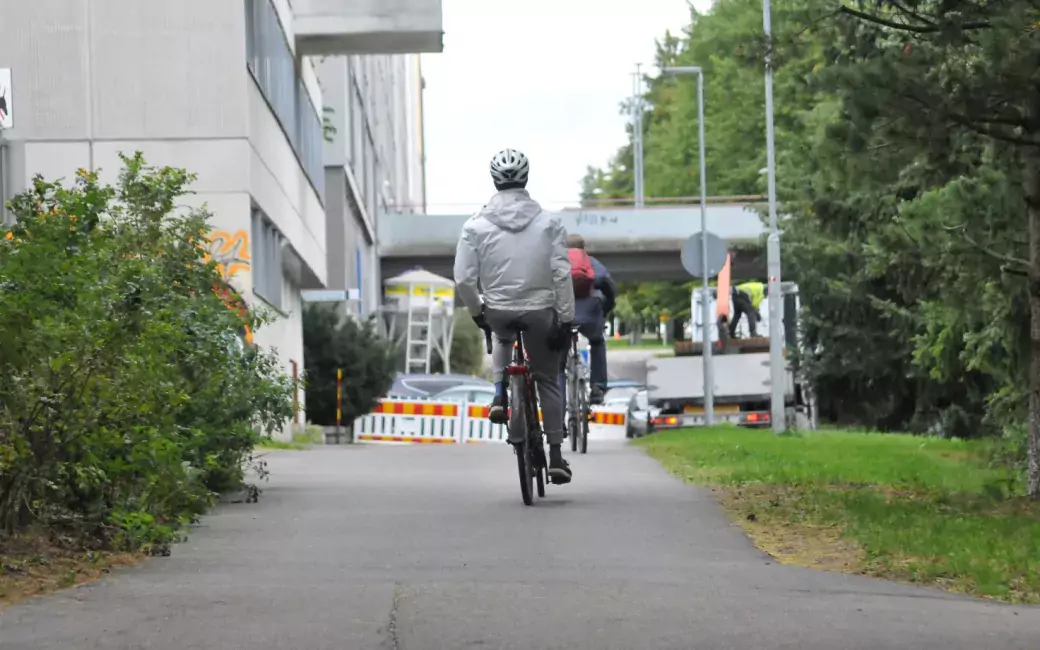New study assesses the healthiness and pleasantness of cycling environment in Helsinki.

Exposure to environmental pollutants, such as particulate matter and noise, can significantly contribute to the prevalence of respiratory and cardiovascular diseases. At the same time, pleasant and green environments have shown to reduce the harm of negative exposures and support health through various pathways. Reducing negative exposures and increasing positive ones is recognized as effective ways to promote public health and people's well-being.
A significant part of our daily exposure comes from travel. Especially when we walk or cycle, we interact directly with our environment. Walking and cycling have a growing importance in preventing the impacts of sedentary lifestyles as well as in combating climate change. Urban and transport planners need ways to identify areas where travel-related exposure exceeds healthy levels, but also where the quality of the environment supports pleasant travel.
A new study from the University of Helsinki's Digital Geography Lab develops an approach to assess environmental exposure during travel at the city scale. The new method helps to understand the exposure of cyclists to air pollution, noise, and greenery in Helsinki.
Using their Green Paths route planning tool, which finds both the shortest and most pleasant routes between user-defined locations, the researchers determined the exposure levels of 3.1 million cycling journeys and evaluated the potential of alternative route options to improve the exposure of cyclists.
"Our results show that the noise exposure of cyclists in the city significantly exceeds the safe limits, while the average air quality stays generally within them," says Doctoral researcher Elias Willberg, who led the study. "We also show that alternative route selection can be an effective way to improve exposure when cycling without significantly lengthening the journey, but the effect depends on the area and the type of exposure," he continues.
The researchers were also interested in understanding the connections between multiple exposures. "We found out that while noise exposure and air pollution typically increase together, the amount of greenery tends to be smaller as pollution increases," says Associate Professor Age Poom from the University of Tartu. "Despite this, cyclists also need to make choices about which exposure they want to optimize by choosing an alternative route" she adds.
"More broadly speaking, we know too little about environmental exposures during travel, their magnitude and health effects," says Professor Tuuli Toivonen. "Our approach offers a way to assess the distribution of exposure from the spatial perspective. This is useful for urban and transport planners in their quest towards good cities for all. However, there is still a long way to go to better understand the health effects of travel-related exposures, the equality of accessibility to healthy environments, and the importance of seasonal variation. We get to tackle these questions in the new five-year project GREENTRAVEL, funded by the European Research Council, which offers the opportunity for many breakthroughs in environmental exposure research," she concludes.
Article available: Willberg, E., Poom, A., Helle, J., Toivonen, T., 2023. Cyclists' exposure to air pollution, noise, and greenery: a population-level spatial analysis approach. International Journal of Health Geographics 22, 5. https://doi.org/10.1186/s12942-023-00326-7






